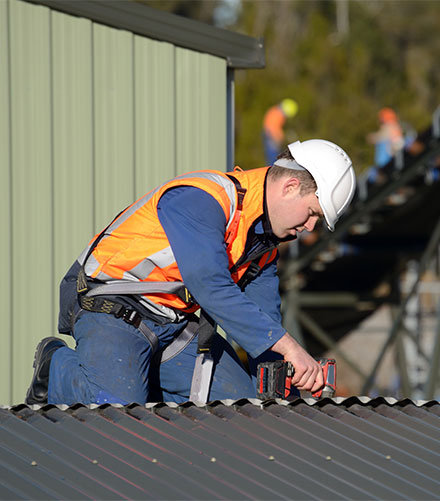Roofing is a high-risk occupation, where safety must be a top priority for every agency and business involved. The hazards associated with working at height demand stringent safety measures to protect workers from potential injuries. This guide provides crucial steps and best practices for maintaining a safe working environment on a roof, ensuring that your team is well-prepared and protected.
Conduct a Comprehensive Pre-Work Safety Assessment
Before any roofing project begins, it is essential to conduct a detailed safety assessment of the worksite. This process starts with evaluating the roof's structure, which includes understanding its type—whether it's flat, sloped, or pitched—and its current condition. Any weak spots, damaged areas, or structural issues should be identified and addressed to prevent accidents.
Weather conditions play a significant role in roofing safety. Adverse weather, such as strong winds, rain, or extreme temperatures, can dramatically increase the risk of falls and other accidents. Therefore, always check the weather forecast before scheduling work, and avoid conducting roofing tasks under hazardous weather conditions.
Another critical aspect of the safety assessment is identifying potential fall hazards. Unprotected edges, skylights, and roof openings are common dangers that need to be recognized early on. Planning to mitigate these risks, such as installing temporary guardrails or covering openings, is crucial for preventing falls.
Equip Workers with the Right Personal Protective Equipment (PPE)
The use of appropriate Personal Protective Equipment (PPE) is non-negotiable when it comes to roofing safety. Every worker should be equipped with a safety harness that is properly fitted and anchored securely to a stable point. These harnesses are essential for preventing serious injuries in the event of a fall.
In addition to harnesses, hard hats are necessary to protect workers from head injuries, whether from falling objects or slips. Non-slip footwear is also critical, especially when working on sloped or wet surfaces, as it helps to maintain balance and traction. Gloves should be worn to protect hands from sharp materials and to improve grip on tools and surfaces.
Regular inspection of PPE is just as important as using it. Damaged or worn-out equipment should be replaced immediately to ensure maximum protection. Keeping a regular log of equipment and ensuring a continual inspection can help to ensure that there is always safe and properly inspected equipment available.

Install and Use Proper Safety Equipment on the Roof
Safety equipment on the roof itself is another layer of protection that should never be overlooked. For instance, installing guardrails around the roof's perimeter is one of the most effective ways to prevent falls, particularly in areas where workers are frequently moving.
In situations where guardrails are not feasible, other safety systems such as safety nets or fall arrest systems should be employed. These systems are designed to catch workers in the event of a fall, minimising the impact and preventing serious injury.
Additionally, safe access to the roof is essential. Ladders and scaffolding should be securely positioned and anchored to prevent them from slipping or collapsing. Workers should be trained to use these access points safely, ensuring that they always maintain three points of contact when climbing.
Foster a Culture of Safety Through Training and Communication
No amount of equipment can replace the importance of proper training and communication. Roofing workers should undergo regular safety training to stay updated on the latest best practices and equipment usage. This training should cover not only the technical aspects of roofing work but also how to identify and respond to potential hazards.
Open lines of communication are vital in maintaining a safe work environment. Workers should feel comfortable reporting unsafe conditions or practices, and supervisors should be proactive in addressing these concerns. Regular safety meetings can help reinforce the importance of safety and provide a forum for discussing any issues or improvements.
Roofing is a demanding and potentially dangerous job, but with the right precautions, it can be done safely. Making sure that the proper precautions are followed at all times is important to the running of any work at height and helps to ensure that all employees are comfortable and able to work safely and effectively.
For the very best in working at height equipment and safety harnesses, check out our range of roofing safety equipment. With a worldwide reputation for providing high quality safety equipment and over 20 years of experience in the industry, we can ensure that your company has safety covered for now and in the future. Contact us today for support or for a quote.

